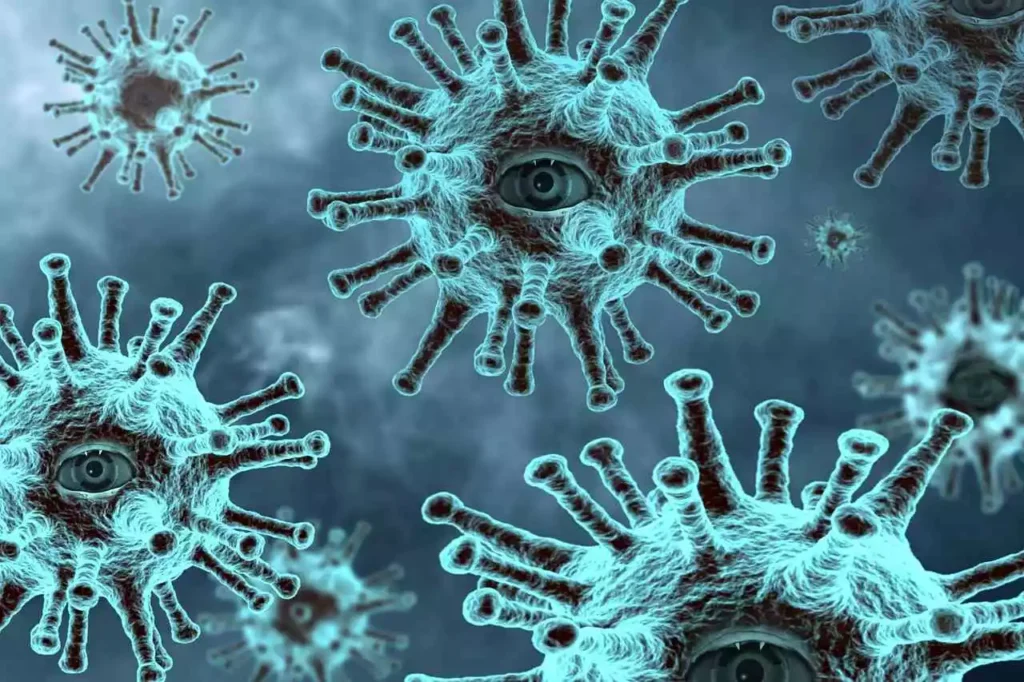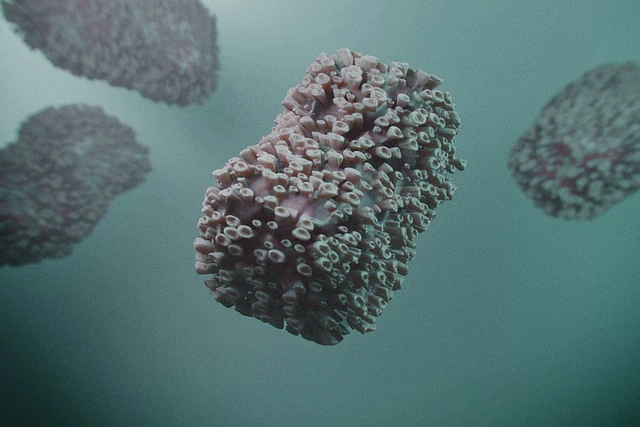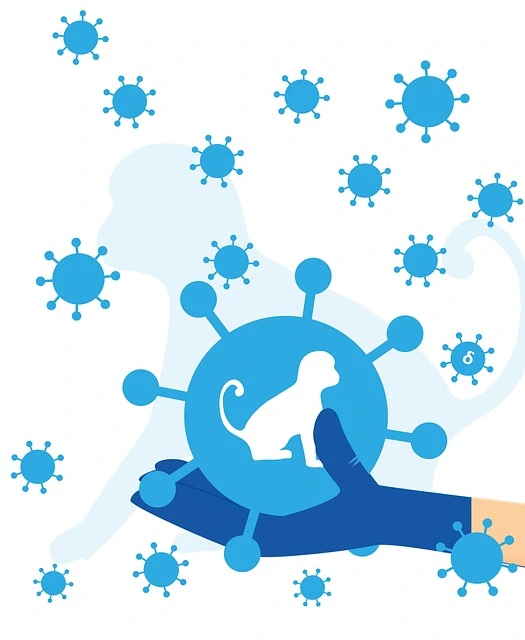
Etiology or causative agent
Monkeypox or mpox a viral disease caused by “the monkeypox virus” an enveloped double-stranded DNA virus member the genus Orthopoxvirus in the family Poxviridae.The two genetic clades of the virus are clade I and II.
Incubation period and duration of infection
Signs and symptoms usually appear within a week but may begin during 1-21 days after exposure. Incubation period may vary depending upon the immune status of the infected person. Once the signs and symptoms appear they last for two to four weeks but may be prolonged for immunocompromised patient.
Signs and Symptoms
Monkeypox or mpox symptoms can be uncomfortable and painful causes flu-like symptoms and a blistery skin rash and mucosal lesions along with fever, headache, muscle aches, back pain, low energy, and swollen lymph nodes. Typically fever, headache and sore throat appear first and then skin rash appear anywhere at body but symptoms may vary person to person.
Rash develop into fluid filled itchy and painful blister evolving as macules, papules, vesicles, pustules stages over the period of 2-4 weeks finally the scabs fall off. Rashes may develop anywhere on the body including face, mouth, throat, palms of hands, soles of feet, groin, genital areas and anus. One of the classic symptom in monkeypox is lymphadenopathy that is swollen lymph nodes.

It is preventable and majority of infected people recover fully but some people may become seriously ill. As the rash heals, the lesions dry up, crust over and fall off. Majority of infected persons recover without severe symptoms although few develop sepsis or complicated secondary infection or death. Some people may remain asymptomatic after infection as well.
Transmission and spread
Person to person transmission
Monkeypox or mpox can spread person to person through direct contact with infected person or other lesions such as in the mouth or on genitals

- face-to-face (talking or breathing)
- skin-to-skin (touching or vaginal/anal sex)
- mouth-to-mouth (kissing)
- mouth-to-skin contact (oral sex or kissing the skin)
- respiratory droplets or short-range aerosols from prolonged close contact
Animal to human transmission
It may occur occasionally from bites or scratches, or during activities such as hunting, skinning, trapping, cooking, playing with carcasses, or eating animals. There is little research about the extent of viral circulation in animals however, research studies are underway.
Transmission from contaminated material
People can contract monkeypox from contaminated objects such as clothing or linens, through sharps injuries in health care, or in community setting such as tattoo parlours.
Diagnosis of Monkeypox or mpox
Due to differential diagnosis with different bacterial skin conditions like chickenpox and measles in children, herpes, scabies ,syphilis and other sexually transmissible diseases. It is also possible that a person have two infections simultaneously along with monkeypox or mpox
Therefore, laboratory detection of viral DNA by PCR (Polymerase Chain Reaction) testing of skin lesion is the key for diagnosis of monkeypox for early treatment and prevention to avoid further spread. Recommended specimen is skin, fluid or crust taken directly from the rash by swabbing.
If no skin lesion is present then oropharyngeal, anal or rectal swabs can be taken from the infected person. Antibody detection or blood testing is not recommended in case of monkeypox virus.
Monkeypox or mpox Treatment and Vaccination
Treatment
There is no treatment available specifically for monkeypox right now but Food and Drug Administration (FDA) approved antiviral drugs used to treat smallpox to treat monkeypox Due to similarity of both viruses smallpox drugs may be used to treat monkeypox or mpox effectively.
The antiviral drugs include tecovirimat (TPOXX) or ST-246 (TPOXX), Brincidofovir (Tembexa) are used for treatment of smallpox in adults and children can be used to treat monkeypox. And cidofovir (Vistide), an intravenously administered antiviral in patients with AIDS.
It is mainly treated by supportive treatment including rash care, pain management and avoid secondary infections or complications. Few antivirals are originally developed for treatment of monkeypox such as tecovirimat while further studies are also in pipeline for new drug discovery. Antimicrobial drugs and antibiotics are used to treat secondary infections and further complications due to bacterial infection. However, prophylactic antibiotic use due to improper diagnosis may accelerate antibiotic resistance during the outbreak.
Vaccination
Vaccination is primary tool to break the chain of spread among people but after vaccination people should not discontinue to avoid contact with infected people. According to CDC recommendation one should get vaccination if someone:

- Had suspected or known exposure with infected person
- Had sex with person diagnosed positive in the past 2 weeks
- Is gay, bisexual, men who had sex with men, transgender, no binary
- or gender-diverse person who in the past 6 months has had any of the following:
- Had a newly diagnosed sexually transmitted infection (e.g., chlamydia, gonorrhea, or syphilis) in last 6 months.
- Had multiple sex partners in the past 6 months
- Had sex at a commercial sex venue in the past 6 months
- Had sex in outbreak area
- Have a sex partner with any of the above risks
- Have HIV or any other immunosuppressive disease
- Had suspected exposure to any settings where one can contract disease
- Have to work in laboratory working on orthopoxviruses
- Is going to be part of health care team as monkeypox care worker response team.
JYNNEOS is a 2-dose Mpox vaccine developed to provide protection against infection. It should be administered twice apart 4 weeks for best protection against monkeypox infection. Vaccine can be administered intradermally or subcutaneously forearm, upper back just below the shoulder blade or skin of shoulder above the deltoid muscle. The vaccine should be administered within 4 days of exposure to the virus or it may extend up to 14 days if there are no symptoms.
Monkeypox or mpox Prevention
There are some dos and don’ts for the infected person to avoid further spread
Do’s
- Avoid physical contact to avoid spread preferably stay at home or isolate in hospitals until all scabs fall off and a new layer of skin forms
- Vaccinate within 4 days of exposure with infected person.
- Keep skin dry and uncovered but cover lesions and wear a well-fitting mask when around other people until scares heal, wash hands and sanitize after touching anything particularly sores.
- Use salt water rinses for sores in mouth. For body sores take warm baths with baking soda or Epsom salts.
- Use painkillers paracetamol (acetaminophen) or ibuprofen for pain relief.
Don’ts
- Never pop/scratch sores because it will delay healing and infect other body parts as well
- Never shave infected skin area to avoid infection to other body parts.